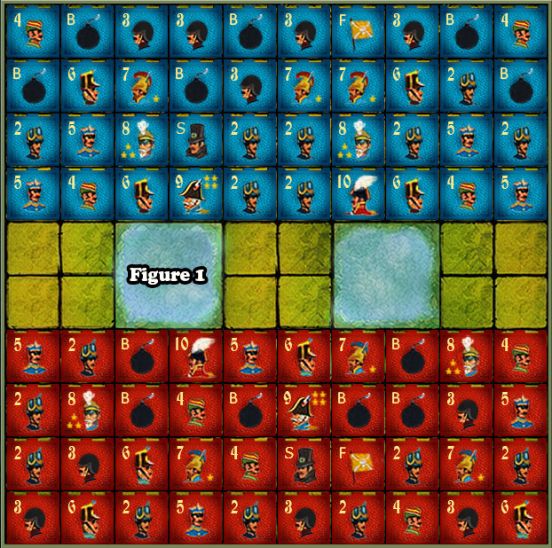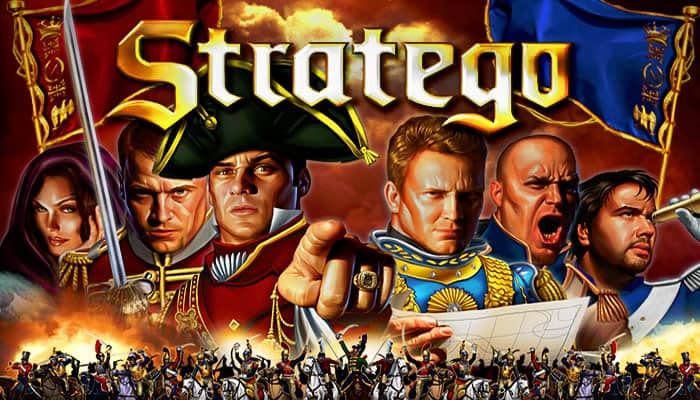A 10 by 10 grid is used to play the classic board game Stratego by Milton Bradley. The goal of each player’s army of moving pieces with hidden values is to seize the other player’s flag. There are two players in the game.
Please read this article carefully if you want to learn how to play the board game Stratego.
What Is Stratego?
Stratego incorporates puzzle-like elements along with elements from both war and strategy games. Early in the 1940s, Jacques Modendorff developed the game. Milton Bradley, who later became a part of Hasbro, received a sublicense.
Even though there are many different Stratego variations available today, the original game continues to feature imagery and themes from the Napoleonic era. Each player in Stratego will have a 40-piece army of their own.
While some components can move, others cannot. Players in Stratego can win by capturing the flag of their rival. Or by taking enough of their rival’s pieces that they are unable to keep playing. Stratego is undoubtedly something you’d enjoy if you like Shogi or Chess.
Aim Of Stratego
There are two methods for winning a game of Stratego. Taking your adversary’s flag is the easiest and most direct strategy. By stealing enough pieces from your rival, however, you can also prevail.
You can accomplish this by successfully hiding bombs behind your opponent’s pieces to block them. Alternatively, you could try to take everything that moves. In Stratego, as in other war games, having a solid strategy is essential for success.
Game Components Of Stratego
A single board with a grid of squares measuring 10 by 10 and two impassable areas in the middle serves as the game’s playing surface. There are a total of 80 pieces—40 for each player—including a flag, six bombs, a spy, and military pieces with values ranging from 1 to 9.
Some more recent Stratego games reverse the rankings, making higher numbers stronger rather than weaker, and use 10s as the Marshalls. When playing, be sure to check which edition you have.
Setup
- Place the gameboard between you and your opponent with the name Stratego facing each of you.
- In one hand, conceal a red piece, and in the other, a blue piece. Your adversary makes a hand selected and uses the army of the chosen color that the chosen piece designates to play. You own the army of the other color.
- The strategy tips and guidelines for moving and attacking that are covered below should be used to arrange your armies.
- With the notched end facing up, place your pieces on the gameboard. To prevent your opponent from seeing the rank of your pieces, the printed side is facing you. Your adversary follows suit.
- Each square can hold only one piece. On your side of the gameboard, put them anywhere in the final four rows. As seen in Figure 1, the two middle rows are empty at the beginning of the game.

Stratego Movement Rules
- During a turn, only one piece can be moved (except Scouts, see “Specialist Pieces”). The only directions that can be moved are forward, backward, and sideways.
- The same square cannot contain two pieces at once.
- An occupied square is impassable to jump over or move through.
- The Lakes region of the board’s center is devoid of squares. Instead of passing over these regions, pieces must move around them.
- A piece cannot be repositioned once it has been moved to a square and the player’s hand has been released.
- Three consecutive moves of the same piece between the same two squares are not permitted. The person who initiated this must end it first.
- The Bombs and the Flag are immobile.
As soon as the game begins, these pieces must stay in their original positions.
Stratego Attacking Rules
If a piece from your adversary is placed in front, next to, or behind any of your own pieces, you may attack. You can’t make a diagonal attack. Attacking is not required.
Attacking In Stratego
- pick up your piece and tap your opponent’s piece,
- Call out your piece’s rank (name and number).
- Your opponent must call out his or her piece’s rank
- The piece with the higher rank successfully attacks and seizes the target piece. Now that square belongs to the winning piece.
- If your piece is lower ranked than that of your opponent, it is captured. The piece belonging to the opposition stays put on its square.
- When your piece and your opponent’s piece have the same rank, both pieces are captured.
Pieces that are captured are taken off the board immediately.
When Attacking A Bomb In Stratego
The attacking piece loses and is taken, prisoner. The Bomb is still in its square. A bomb can only be attacked and removed by miners! See “Specialist Pieces”.
NOTE: Bombs and the Flag are unable to attack.
Winning The Game
Taking your opponent’s Flag is the standard strategy in Stratego games. Your goal should be to locate this piece as quickly as you can because it cannot be moved. When you are ready to take it, you must move a piece to it.
It won’t always be this easy, though. The Flag will probably be protected by other pieces, like bombs, by a good Stratego player. In addition to winning the Flag, another way to win Stratego is to try and take all of your opponent’s movable pieces.
Although it may seem challenging, if you act quickly, you can prevent your opponent from moving particular pieces. Stratego pieces cannot jump over obstacles, so you can use bombs to block your opponent.
It takes more skill to execute this plan. But with the right preparation, you can catch opponents off guard and increase your chances of winning.
Additional Tournament Rules
For the Stratego player looking for an extra challenge, we’ve included these three rule variations. You are free to modify the game’s rules by choosing one or a combination of them.
Aggressor Advantage
When pieces of the same rank engage in combat, the attacking piece prevails.
Silent Defense
The attacker is the only player who must declare the rank of his or her piece when making an attack. The defender does not disclose the rank of his or her piece; instead, the attack is stopped by removing the lower-ranking piece from the gameboard.
Players keep the pieces they have successfully captured. The defender must reveal the rank of his or her piece when a Scout attacks.
Rescue
You have the choice to save one of your captured pieces when you move onto a square in your opponent’s back row. Pick any piece that has been captured by your rival and put it back on the gameboard right away.
Your turn ends when you place your recovered piece on any open area on your side of the gameboard.
Read More:
